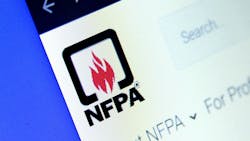Job safety planning and job briefing are covered in 110.3(I). The requirements are pretty bare bones, as they are not intended to be a paint by numbers reference. The idea is they present the minimum requirements, and it’s up to you to implement those based on your specific conditions and constraints.
But if you are not familiar with these requirements — or your firm has only dipped its toe into NFPA 70E waters thus far — complying with 110.3(I) could feel a bit daunting. That’s where Annex I comes in. Figure I.1 is a sample job briefing checklist. A little history will help us understand why this checklist is the way it is, and why it’s used as the sample.
Many of the panel members have worked for (or still work for) electrical testing firms. These firms go into unfamiliar environments (someone else’s plant) and often encounter unknowns due to poor documentation and/or poor maintenance. In their work, they have used checklists just like the one in Figure I.1. Some of the other panel members have similarly worked in “above average risk” situations and have used similar tools.
This dynamic also applies to the job safety planning checklist. It didn’t come out of thin air and wasn’t the result of some desk jockey trying to cure his boredom. It came out of years and years of experience in the field. The people with this experience might be described as “safety obsessive,” “detail driven,” or “borderline paranoid,” They can also be described as alive and well. And that’s because of their detail driven, methodical approach to safety.
The sample job briefing checklist is simple in its structure and could be printed on a cardboard tag that a supervisor would keep in his pocket. Or it can be made into an app or webform, accessible on a phone or tablet. It covers six root tasks:
- Identify
- Ask
- Check
- Know
- Think
- Prepare for an emergency
For each of those root tasks, you’ll find a set of checkboxes. This sample checklist might not fit your situation exactly, but it’s a good start. If you decide to modify it for your own version, be careful to keep it lean and organized.
The job safety planning checklist is structured very differently. It’s more like something you would have in a work packet or three-ring binder. But like the sample job briefing, it’s divided into parts. But these are sections, and there are eight of them (A through H). Instead of root tasks, they are areas of concern:
- General. These are questions you mark Y or N as appropriate.
- Shock hazard information. You use the referenced tables and provide the asked for information.
- Shock control information. These are questions you mark Y or N as appropriate.
- Arc flash control information. You use information from the incident energy study to provided the asked for information (which includes level of PPE and working distance).
- Arc flash hazard control information and arc flash PPE category method. You determine the fault current and overcurrent device clearing time. Then there are questions you mark Y or N as appropriate.
- More arc flash protection information. This is about PPE.
- Energy source controls. Four types of information to provide here.
- Work procedures and special precautions. You just need to list these in the box.
About the Author

Mark Lamendola
Mark is an expert in maintenance management, having racked up an impressive track record during his time working in the field. He also has extensive knowledge of, and practical expertise with, the National Electrical Code (NEC). Through his consulting business, he provides articles and training materials on electrical topics, specializing in making difficult subjects easy to understand and focusing on the practical aspects of electrical work.
Prior to starting his own business, Mark served as the Technical Editor on EC&M for six years, worked three years in nuclear maintenance, six years as a contract project engineer/project manager, three years as a systems engineer, and three years in plant maintenance management.
Mark earned an AAS degree from Rock Valley College, a BSEET from Columbia Pacific University, and an MBA from Lake Erie College. He’s also completed several related certifications over the years and even was formerly licensed as a Master Electrician. He is a Senior Member of the IEEE and past Chairman of the Kansas City Chapters of both the IEEE and the IEEE Computer Society. Mark also served as the program director for, a board member of, and webmaster of, the Midwest Chapter of the 7x24 Exchange. He has also held memberships with the following organizations: NETA, NFPA, International Association of Webmasters, and Institute of Certified Professional Managers.
